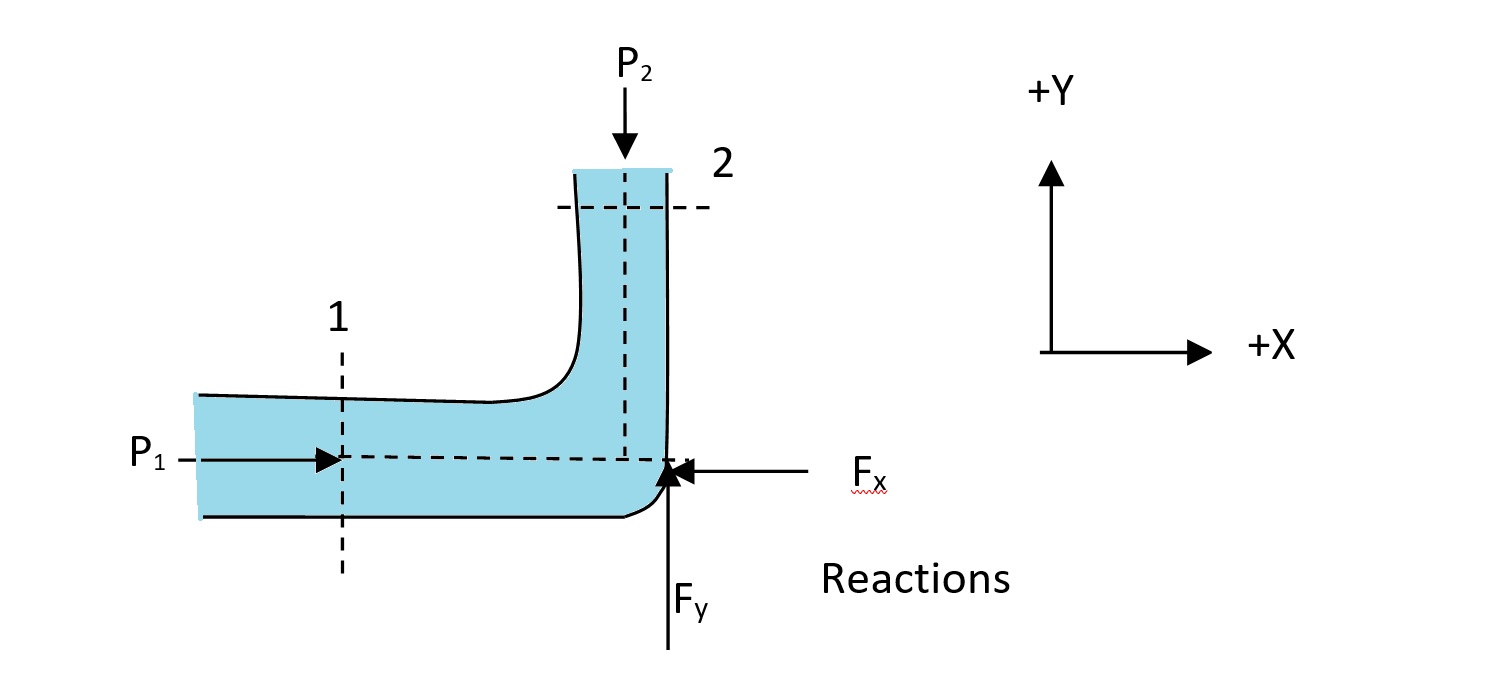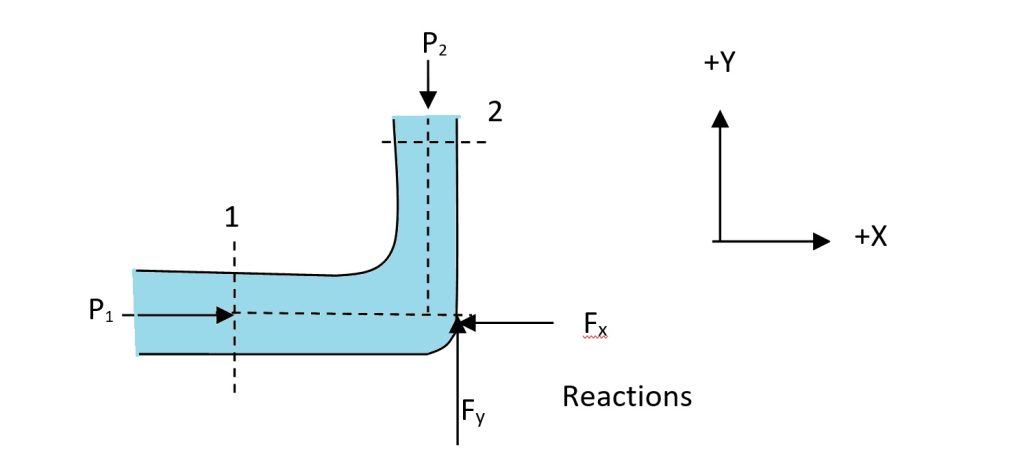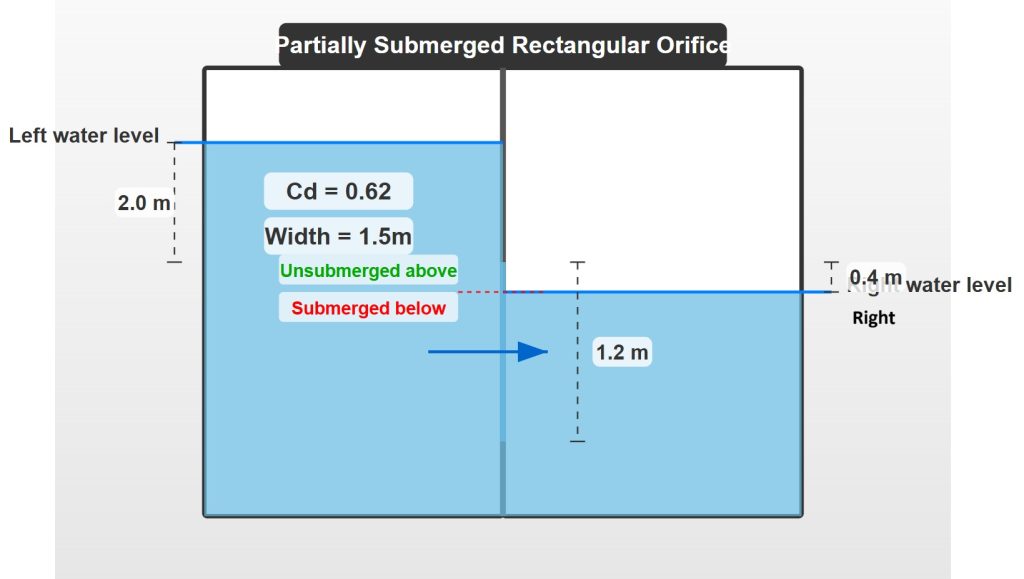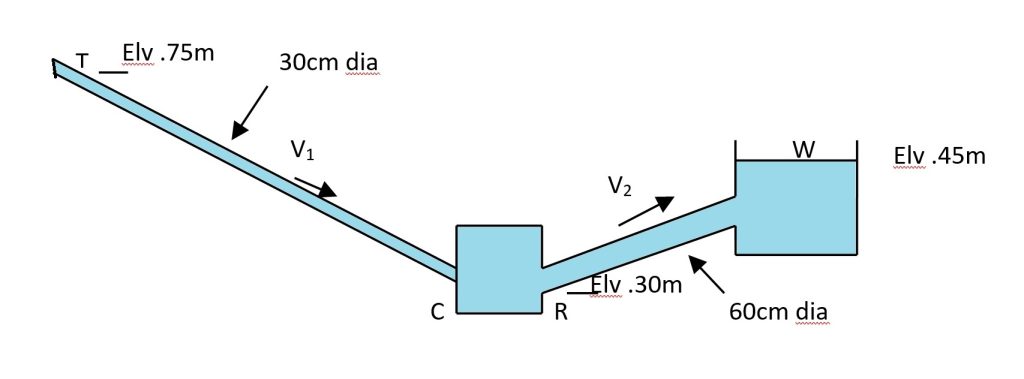Pipe Bend Force Calculation
Problem Statement
A 500mm pipe carrying 0.8 m³/s of oil (sp gr 0.85) has a 90° bend in a horizontal plane. The loss of head in the bend is 1.1m of oil, and the pressure at the entrance is 290kPa. Determine the resultant force exerted by the oil on the bend.

Given Data
Solution Approach
To find the resultant force exerted by the oil on the bend, we need to:
- Calculate the cross-sectional area and velocity in the pipe
- Apply Bernoulli’s equation to find the pressure at the exit (section 2)
- Determine the forces in both X and Y directions using the momentum equation
- Calculate the resultant force and its direction
Preliminary Calculations
Step 1: Calculate the cross-sectional area:
Step 2: Calculate the velocity (uniform throughout the pipe):
Applying Bernoulli’s Equation
Step 1: Apply Bernoulli’s equation between sections 1 and 2 (in a horizontal plane, Z₁ = Z₂):
Step 2: Substitute the values:
Force in X-Direction
Step 1: Apply the momentum equation in the X-direction:
Step 2: At section 1, the velocity is entirely in the X-direction (V₁x = V₁ = 4.07 m/s). At section 2, after the 90° bend, there is no X-component of velocity (V₂x = 0).
Step 3: Solve for Fx:
Force in Y-Direction
Step 1: Apply the momentum equation in the Y-direction:
Step 2: At section 1, there is no Y-component of velocity (V₁y = 0). At section 2, after the 90° bend, the velocity is entirely in the Y-direction (V₂y = V₂ = 4.07 m/s).
Step 3: Solve for Fy:
Resultant Force Calculation
Step 1: Calculate the magnitude of the resultant force:
Step 2: Calculate the direction of the resultant force:
Summary
- The fluid velocity in the pipe was calculated to be 4.07 m/s.
-
Using Bernoulli’s equation with head loss, we determined the pressure at the exit:
- P₁ = 290,000 Pa (given)
- P₂ = 280,828 Pa (calculated, accounting for the head loss of 1.1 m)
-
The force components were calculated using the momentum equation:
- X-direction force: Fx = 59,709 N
- Y-direction force: Fy = 57,908 N
-
The resultant force on the bend:
- Magnitude: 83,177 N
- Direction: 44.10° from the X-axis (to the right and downward)
This problem demonstrates the application of Bernoulli’s principle with head loss and the momentum equation in fluid mechanics to determine forces on pipe bends. The resultant force is substantial due to both the pressure forces and the momentum change of the fluid as it changes direction through the 90° bend.





